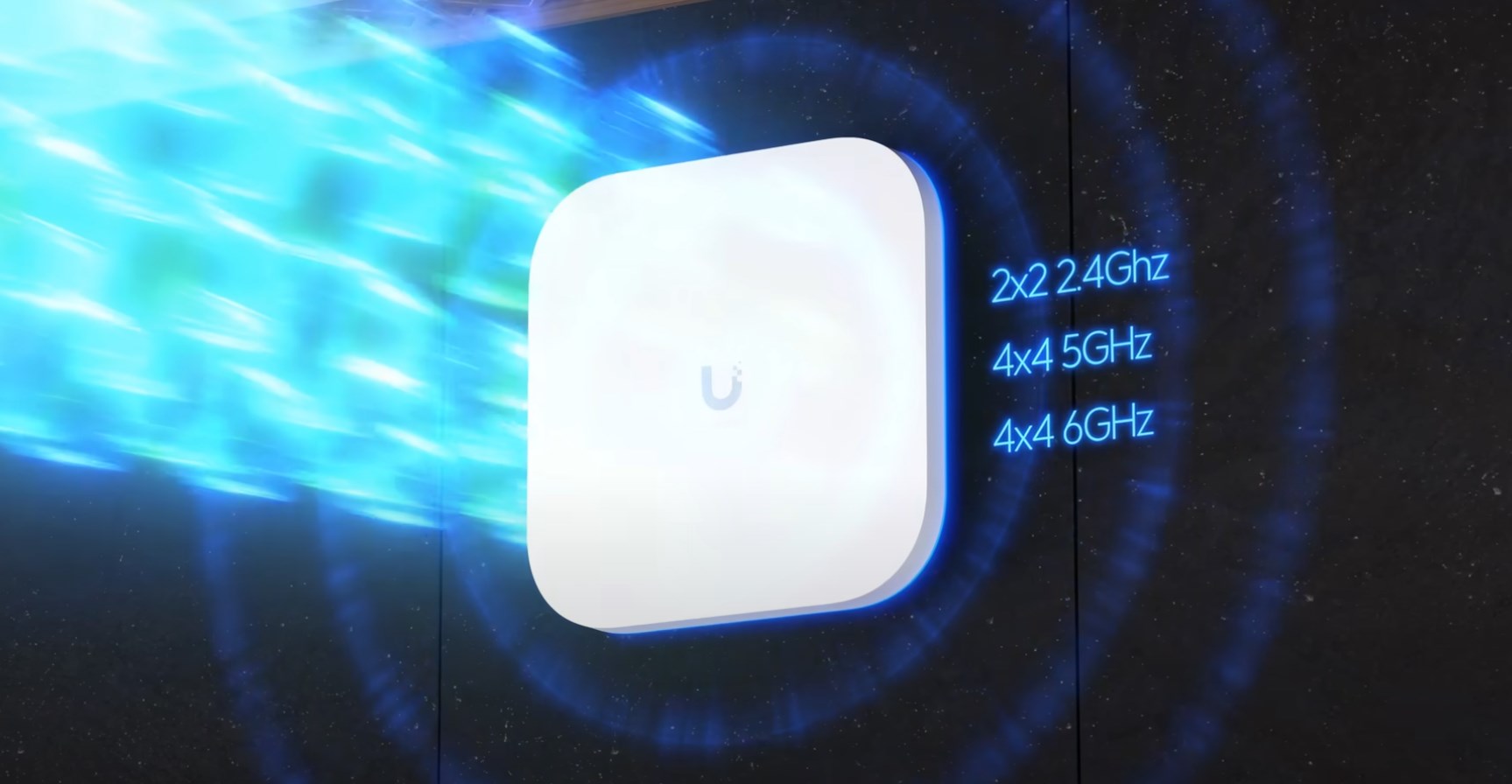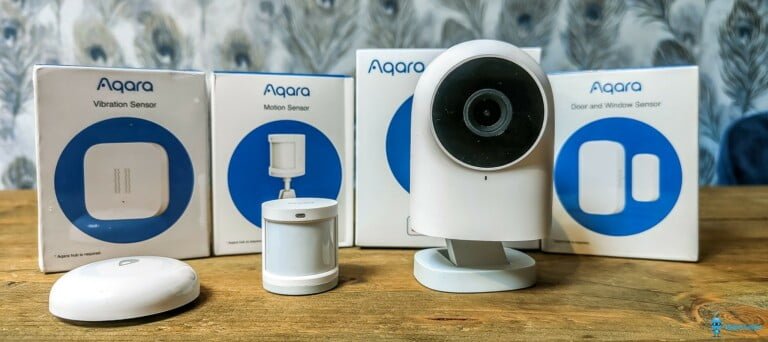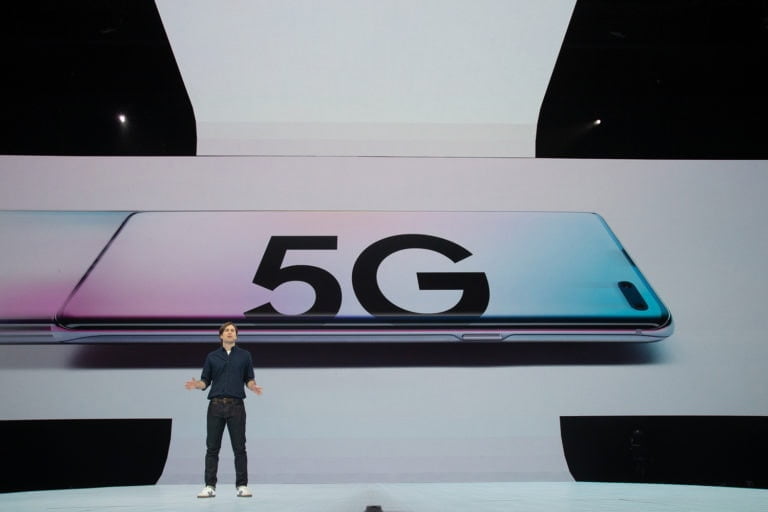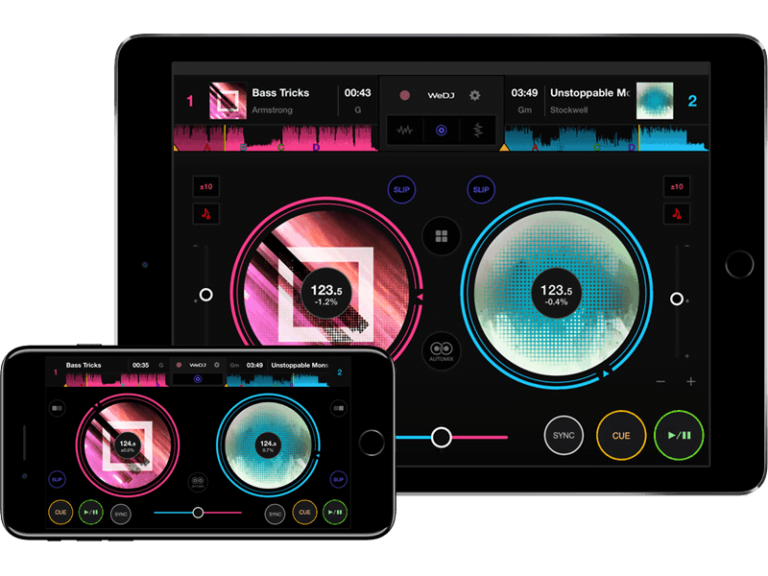Any links to online stores should be assumed to be affiliates. The company or PR agency provides all or most review samples. They have no control over my content, and I provide my honest opinion.
Ubiquiti has unveiled its latest UniFi Enterprise Wi-Fi 7 lineup, featuring three cutting-edge access points: the E7, E7 Audience, and E7 Campus. These devices represent a significant leap forward in wireless networking technology, offering exceptional performance, capacity, and features for various enterprise environments.
While many enthusiasts will yearn for one of these access points, they will be overkill for the vast majority of people. That being said, the UniFi E7 is one of the most affordable WiFi 7 access points with 10GbE and 4×4 for 5GHz/6GHz. The only other option I am aware of that’s cheaper is the superb EnGenius ECW536.
Related Content
- Ubiquiti Unifi U7 Pro WiFi 7 Access Point Review
- Ubiquiti Unifi Switch Flex Mini 2.5G Review
- Ubiquiti Unifi Pro Max 16 Review
- Unifi Cloud Gateway Max Review
- EnGenius ECW526 WiFI 7 Access Point Review
- UniFi 7 Pro Max vs UniFi 7 Pro vs U7 Pro Wall vs U7 Outdoor WiFi 7 Access Points
- Affordable Wi-Fi 7 Access Point Comparison
- Zyxel NWA130BE WiFi 7 Access Point Review
UniFi E7: The Versatile Powerhouse
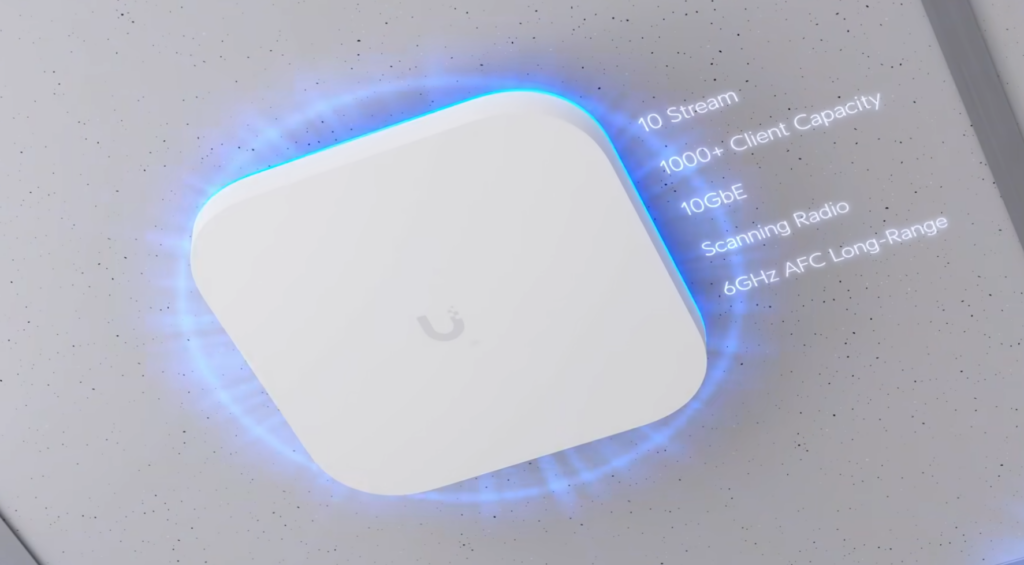
The UniFi E7 is positioned as the versatile all-rounder in the new lineup, designed to deliver high performance in critical enterprise environments.
Key Features:
- Wi-Fi 7 Support: The E7 supports the latest Wi-Fi 7 standard, including the 6 GHz band.
- 10-Stream Configuration: It features a 2×2 MIMO on 2.4 GHz, and 4×4 MIMO on both 5 GHz and 6 GHz bands.
- High Client Capacity: Capable of handling over 1,000 concurrent clients.
- 10 GbE Connectivity: Equipped with a 10 GbE port for high-speed wired connections.
Performance:
The E7 boasts impressive data rates across all bands:
- 2.4 GHz: Up to 688 Mbps
- 5 GHz: Up to 8.6 Gbps
- 6 GHz: Up to 11.5 Gbps
Long-range 6 GHz Performance with AFC
One of the E7’s standout features is its long-range 6 GHz performance with Automated Frequency Coordination (AFC). AFC is a dynamic spectrum access system that allows Wi-Fi devices to operate at higher power levels in the 6 GHz band. This technology enables the E7 to provide extended range and improved performance in the 6 GHz spectrum.
The benefits of AFC include:
- Increased Coverage: Higher transmit power allows for better signal propagation, especially through walls and other obstacles.
- Improved Throughput: Stronger signals at longer distances can maintain higher data rates.
- Reduced Interference: AFC helps minimise interference with other devices and networks operating in the same frequency range.
It’s worth noting that AFC is currently only available in the FCC/IC region (United States and Canada). This limitation is due to regulatory differences in various countries. The FCC has approved the use of AFC for 6 GHz Wi-Fi, while other regions are still in the process of developing their own regulations for this technology.
UniFi E7 Audience: High-Density Specialist
The E7 Audience is designed specifically for high-density environments, making it ideal for venues like stadiums, conference centres, and large public spaces. This access point drops the 2.4Ghz band, which is not much use for high density, and adds a second 4-stream 6GHz radio, allowing it to support 1500 clients.
Key Features:
- Enhanced Wi-Fi 7 Support: Offers both low and high band support for 5 GHz and 6 GHz.
- Massive Client Capacity: Can handle over 1,500 concurrent clients, the highest in the lineup.
- Directional Antenna System: Features a selectable directional beamforming antenna.
Performance:
The E7 Audience focuses on the higher frequency bands:
- 5 GHz: Up to 8.6 Gbps
- 6 GHz: Up to 11.5 Gbps
Selectable Directional Beamforming Antenna
One of the E7 Audience’s most innovative features is its selectable directional beamforming antenna system. This system allows for two configurations:
- 15 dBi gain with a 50° beam width
- 11 dBi gain with a 90° beam width
This flexibility in antenna configuration offers several benefits:
- Optimised Coverage: Network administrators can adjust the cell size and shape to suit specific environments and user densities.
- Improved Signal Strength: The higher gain options allow for stronger signals over longer distances.
- Reduced Interference: Directional antennas can help minimise interference between adjacent access points.
- Enhanced Capacity: By focusing the signal where it’s needed most, the E7 Audience can support more clients in high-density areas.
UniFi E7 Campus: Rugged Outdoor Performance
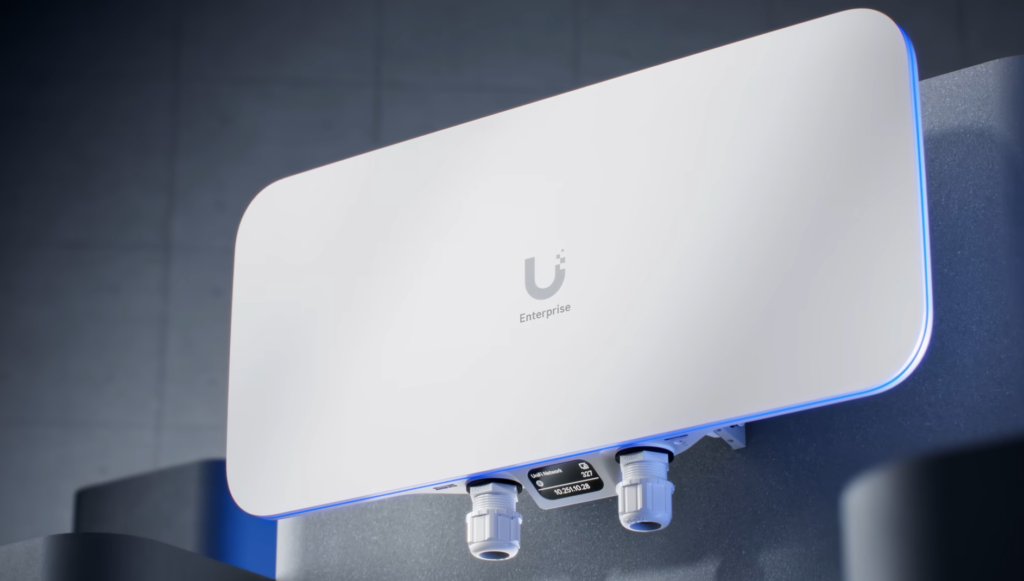
The E7 Campus is designed for outdoor and harsh environments, combining high performance with durability. This drops the 6GHz band in favour of an IP rating, making it suitable for outdoor use. Interestingly, Automated Frequency Coordination (AFC) is required for 6GHz outdoors, and Unifi states they support this with the E7, so it is interesting that the 6GHz band is not included here. Currently, it is only the Ruckus T670 Outdoor WiFi 7 Access Point which supports 6GHz outdoors, and that will set you back around $3K.
Key Features:
- Weather-Resistant Design: IPX6 rated, upgradable to IP67 with an optional Waterproof Door Kit.
- Dual-Band Operation: Supports 2.4 GHz and 5 GHz bands.
- High Client Capacity: Can handle over 1,000 concurrent clients.
Performance:
The E7 Campus offers robust performance on its supported bands:
- 2.4 GHz: Up to 688 Mbps
- 5 GHz: Up to 8.6 Gbps (both low and high bands)
Shared Advanced Technologies
All three models in the UniFi Enterprise Wi-Fi 7 lineup share some advanced technologies that set them apart from previous generations and competitors.
High Selectivity PRISM RF Filtering Technology
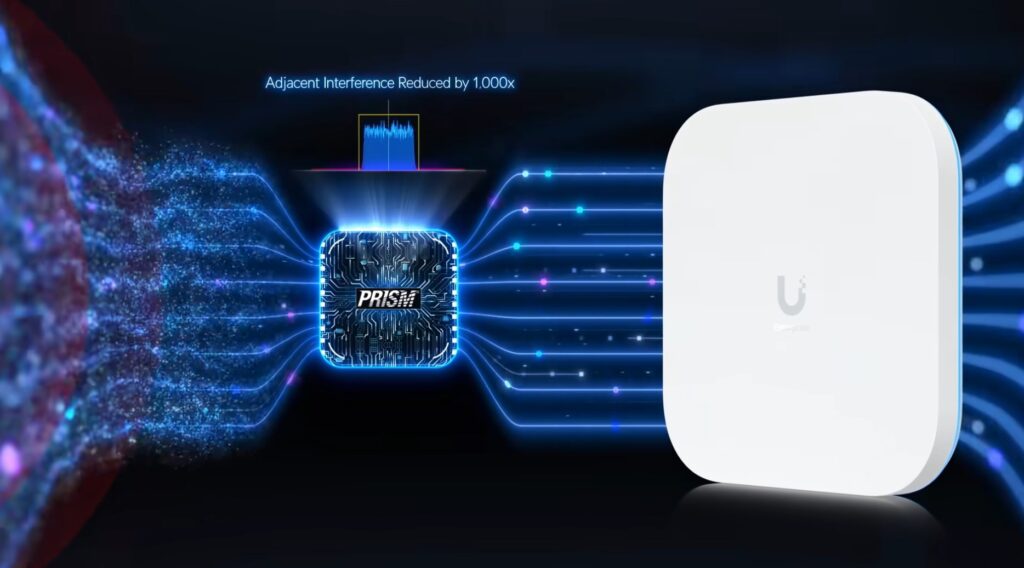
PRISM (Proprietary Radio Isolation Shield Module) is a patented active RF filtering technology developed by Ubiquiti. This technology is designed to significantly reduce adjacent channel interference, which is crucial in densely populated Wi-Fi environments.
How PRISM works:
- Down-conversion: The incoming Wi-Fi signal is converted to an intermediate frequency.
- Brick Wall Filtering: A highly selective filter is applied to the intermediate frequency signal.
- Up-conversion: The filtered signal is then converted back to the original Wi-Fi frequency.
The benefits of PRISM technology include:
- Reduced Interference: It can reduce adjacent interference by more than 1,000 times.
- Improved Signal Quality: By filtering out unwanted signals, PRISM helps maintain a cleaner RF environment.
- Enhanced Performance: Reduced interference leads to better throughput and more stable connections, especially in challenging RF environments.
Dedicated Spectral Analyzer Radio
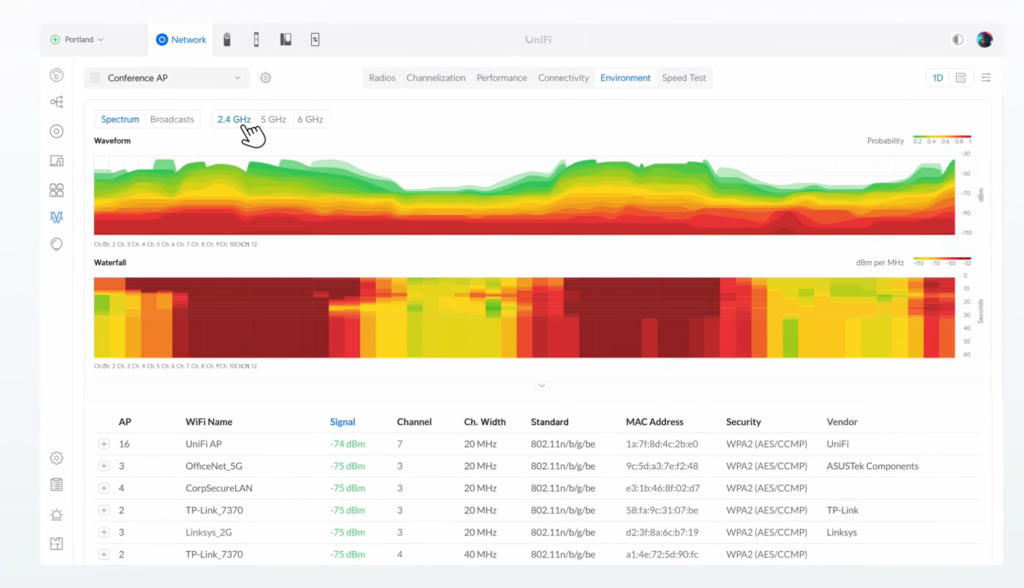
All three models in the UniFi Enterprise Wi-Fi 7 lineup feature a dedicated spectral analyzer radio. This is a separate radio module specifically designed to continuously monitor the RF environment without impacting the performance of the main Wi-Fi radios.
The benefits of a dedicated spectral analyzer radio include:
- Real-time Interference Detection: The radio can constantly scan for sources of interference across all available channels.
- Optimised Channel Selection: By analysing the RF spectrum in real-time, the access point can dynamically select the best channel for operation.
- Improved Network Performance: Continuous monitoring and adjustment lead to better overall network performance and stability.
- Troubleshooting Aid: Network administrators can use the spectral data to identify and resolve RF issues more quickly.
Unfi E7 vs E7 Audience vs E7 Campus Specification Comparison
When comparing the three models, each has its strengths and ideal use cases:
| Specification | E7 | E7 Audience | E7 Campus |
|---|---|---|---|
| Physical Specifications | |||
| Dimensions | 250 x 250 x 43.5 mm | 474.1 x 239.4 x 42.2 mm | 250 x 250 x 45.5 mm |
| Weight | 1.8 kg (4 lb) | 3.2 kg (7.1 lb) without mount | 2.2 kg (4.9 lb) |
| Enclosure Material | UV-stabilized polycarbonate, aluminum alloy | Aluminum alloy, UV-stabilized polycarbonate | UV-stabilized polycarbonate, aluminum alloy |
| Environmental Protection | Not specified | Not specified | IPX6 (IP67 with Waterproof Door Kit) |
| Networking | |||
| Network Ports | (1) 10 GbE + (1) 1 GbE | (1) 10 GbE + (1) 1 GbE | (1) 10 GbE + (1) 1 GbE |
| Power Method | PoE++ | PoE++ | PoE++ |
| Max Power Consumption | 43W | 51W | 44W |
| Radio Capabilities | |||
| 2.4 GHz Support | Yes | No | Yes |
| 5 GHz Support | Yes | Yes | Yes (Low/High band) |
| 6 GHz Support | Yes | Yes (Low/High band) | No |
| MIMO Configuration | |||
| 2.4 GHz | 2×2 | – | 2×2 |
| 5 GHz | 4×4 | 4×4 | 4×4 (Low/High band) |
| 6 GHz | 4×4 | 4×4 (Low/High band) | – |
| Maximum TX Power | |||
| 2.4 GHz | 23 dBm | – | 23 dBm |
| 5 GHz | 30 dBm | 30 dBm | 30 dBm |
| 6 GHz | 24 dBm / 30* dBm | 30 dBm* | – |
| Antenna Gain | |||
| 2.4 GHz | 5 dBi | – | 9 dBi |
| 5 GHz | 6 dBi | 15 dBi (Small) / 11 dBi (Large) | 12 dBi |
| 6 GHz | 6 dBi | 15 dBi (Small) / 11 dBi (Large) | – |
| Maximum Data Rates | |||
| 2.4 GHz | 688 Mbps | – | 688 Mbps |
| 5 GHz | 8.6 Gbps | 8.6 Gbps | 8.6 Gbps |
| 6 GHz | 11.5 Gbps | 11.5 Gbps | – |
| Environmental | |||
| Operating Temperature | -30 to 50°C | -40 to 60°C | -30 to 60°C |
| Operating Humidity | 5-95% noncondensing | 5-95% noncondensing | 5-95% noncondensing |
| Special Features | |||
| Antenna Pattern | Omni | Directional (50° Small/90° Large) | Directional |
| Concurrent Clients | 1,000+ | 1,500+ | 1,000+ |
| Special Features | Dedicated spectral analyzer | – PRISM™ RF filtering – Dedicated spectral analyzer | – PRISM™ RF filtering – Dedicated spectral analyzer |
I am James, a UK-based tech enthusiast and the Editor and Owner of Mighty Gadget, which I’ve proudly run since 2007. Passionate about all things technology, my expertise spans from computers and networking to mobile, wearables, and smart home devices.
As a fitness fanatic who loves running and cycling, I also have a keen interest in fitness-related technology, and I take every opportunity to cover this niche on my blog. My diverse interests allow me to bring a unique perspective to tech blogging, merging lifestyle, fitness, and the latest tech trends.
In my academic pursuits, I earned a BSc in Information Systems Design from UCLAN, before advancing my learning with a Master’s Degree in Computing. This advanced study also included Cisco CCNA accreditation, further demonstrating my commitment to understanding and staying ahead of the technology curve.
I’m proud to share that Vuelio has consistently ranked Mighty Gadget as one of the top technology blogs in the UK. With my dedication to technology and drive to share my insights, I aim to continue providing my readers with engaging and informative content.

